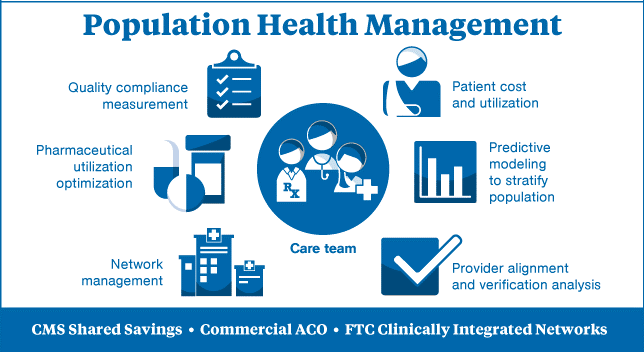Population Health Management

Lately I have been hearing the term “Population Health” in most of my conversations with the instructors from Warp Training Australia and healthcare executives. It is easy to think up a meaning for this term based on our mental model of what “Population Health” would or could mean. I looked up various definitions online and found one that was close to my mental model. Here it is – “Population Health is an approach to health that aims to improve the health of an entire population.” Simple! Isn’t it?
To improve the health of an entire set of individuals, one of the steps should be to reduce the disparities among the population groups. This is not very easy as it might seem. In any population group, we will find a group of individuals who are healthy, a group that is fairly healthy and others that have poor health. This is because not all people have equal access to health care. This leads to disparities in health outcomes. Low-income persons, racial and ethnic minorities, and other underserved populations often have higher rates of disease, fewer treatment options, and reduced access to care. They are also less likely to have health insurance than the population as a whole. Many different ethnic and other minorities still lag behind when we look at health outcome measures. They are less likely to get the care they need to stay healthy, more likely to suffer from serious illnesses, such as diabetes or heart disease, and when they do get sick, are less likely to have access to quality health care. Some of the reasons could be due to the type of coverage they have or sometimes due to not having any insurance at all. It is these individuals who contribute to higher costs of healthcare.
The Affordable Care Act has some time attendance systems and features that will help in addressing this issue. Some of them are providing preventive care for eligible people, better coordinated care through home health for expectant mothers and newborns, improving communication towards culturally diverse population, options for classes like private swimming, increased funding for community health centers and putting to an end insurance discrimination based on gender or pre-existing conditions. These new reforms will definitely help in improving the overall population health, but how long will this take and at what cost is still unknown.
[simple-social-share]


